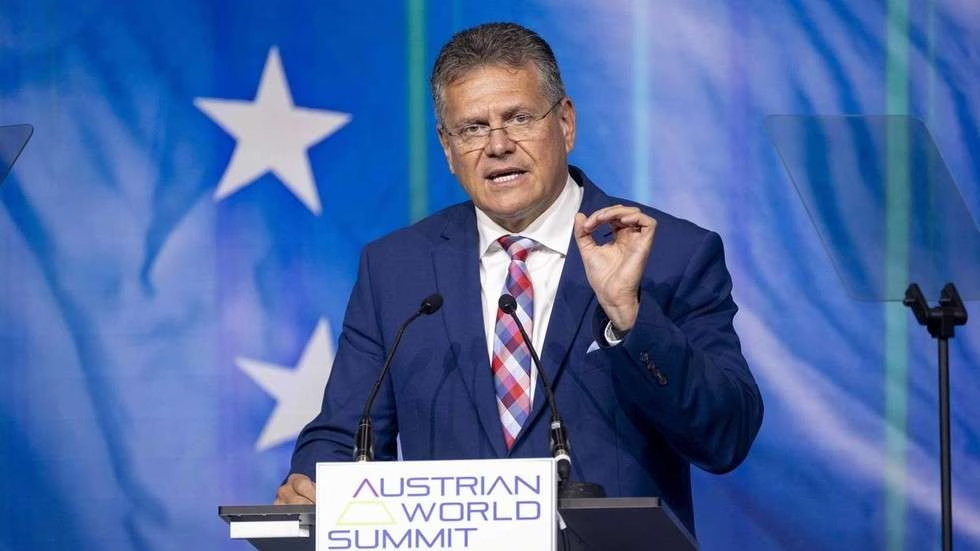In a bid to address the trade imbalance between the European Union and the United States, the EU is considering a significant increase in imports of US goods, valued at $56 billion. This move, as announced by European Trade Commissioner Maros Sefcovic, aims to persuade the US to eliminate the import tariffs imposed by President Donald Trump. The tariffs, part of Trump’s ‘Liberation Day’ campaign, targeted over 90 countries and were designed to counter what the president perceives as unfair trade imbalances.
According to Sefcovic, the EU can quickly resolve the trade deficit, which stands at €50 billion ($56 billion), by increasing purchases of US goods such as liquefied natural gas (LNG) and agricultural products like soybeans. However, the commissioner emphasized that the EU would not accept the current 10% tariffs on its goods as a fair resolution. He also warned that striking a deal that is acceptable to all EU member states and the European Parliament would be “very difficult.”
The trade tensions between the US and the EU escalated earlier this year when the Trump administration announced a 20% tariff on all EU goods and a 25% tariff on car imports. In response, Brussels planned to introduce 25% retaliatory tariffs on US imports, but Trump’s 90-day pause on most tariffs allowed for negotiations to take place. Although the 10% baseline tariff and 25% tariff on certain goods remain in place, European Commission President Ursula von der Leyen has proposed a deal to remove tariffs on all industrial goods. However, Trump has rejected this proposal, citing that it does not address the trade imbalance.
The trade volumes between the US and the EU are substantial, with a total value of $975.9 billion in 2024. While the US purchased $605.8 billion worth of EU goods, the EU’s imports from the US amounted to $370.2 billion. As the two economic giants navigate their trade relationship, the EU’s willingness to increase imports of US goods may pave the way for a resolution to the ongoing trade dispute. However, with the EU’s insistence on a fair deal and the US’s desire to address the trade imbalance, the path to a mutually beneficial agreement remains uncertain.
